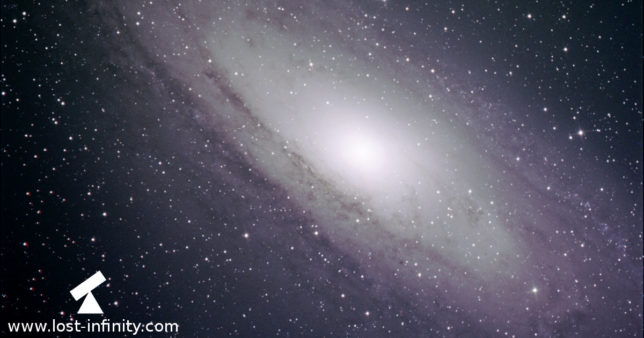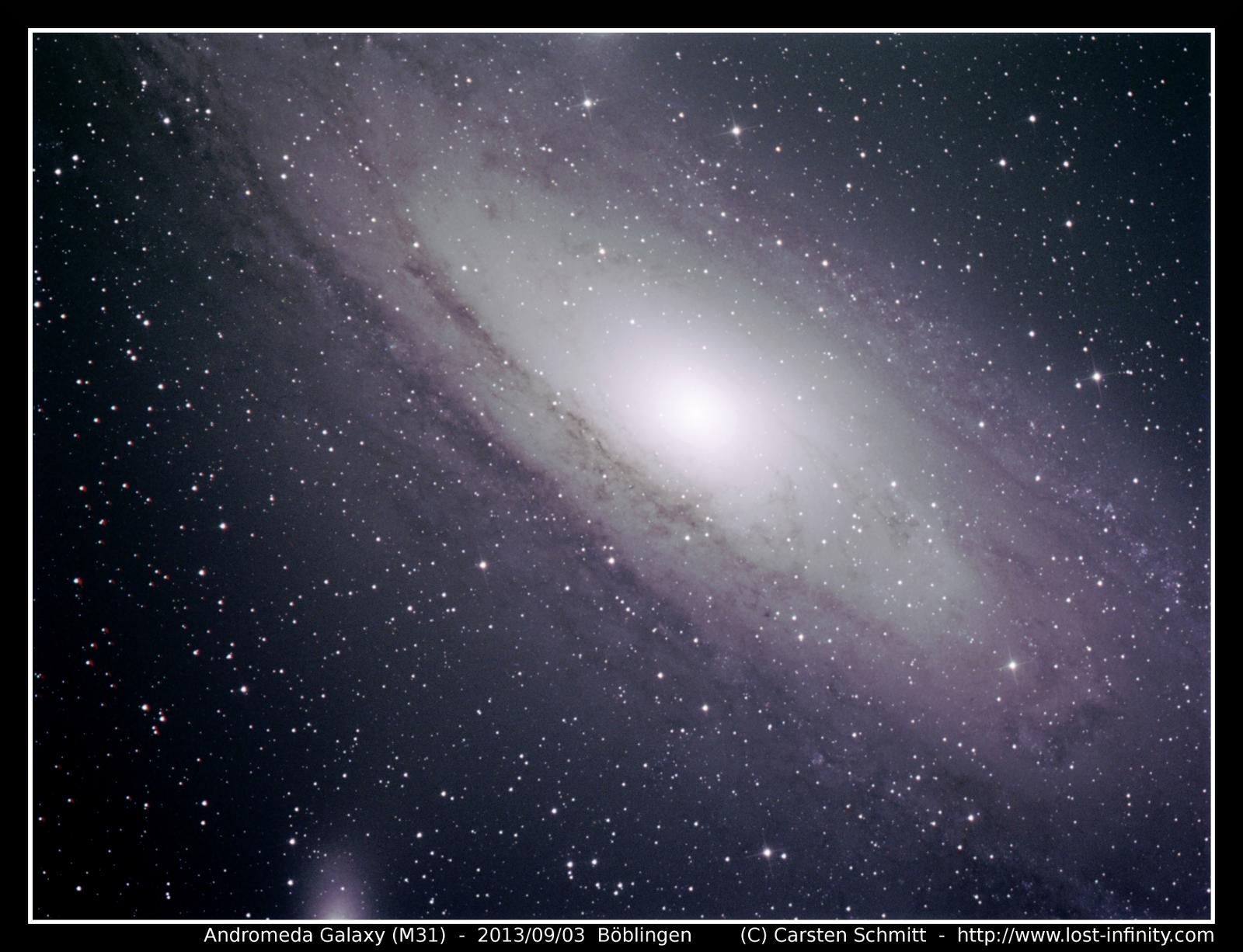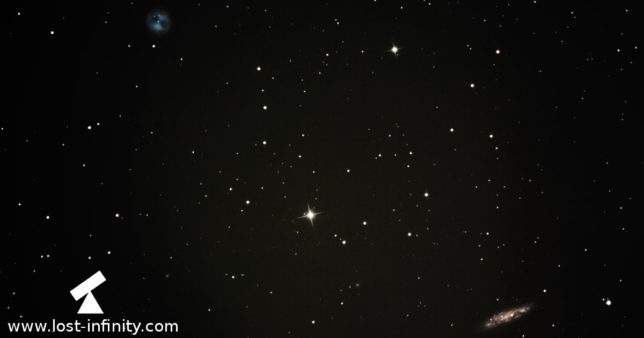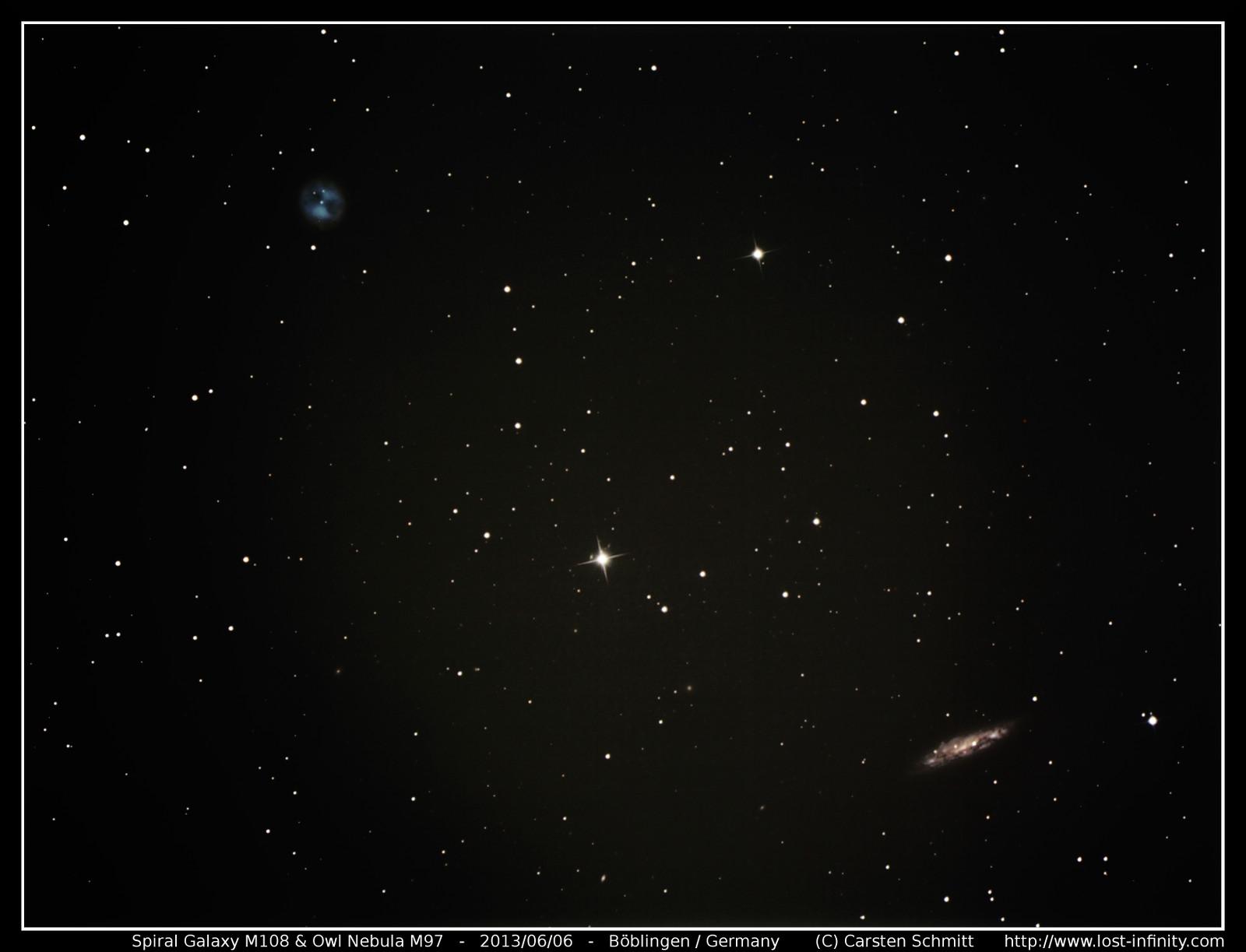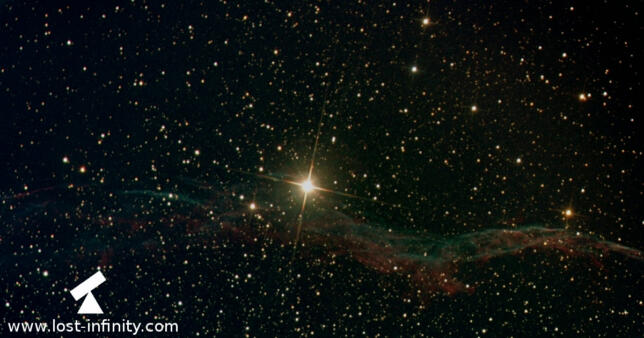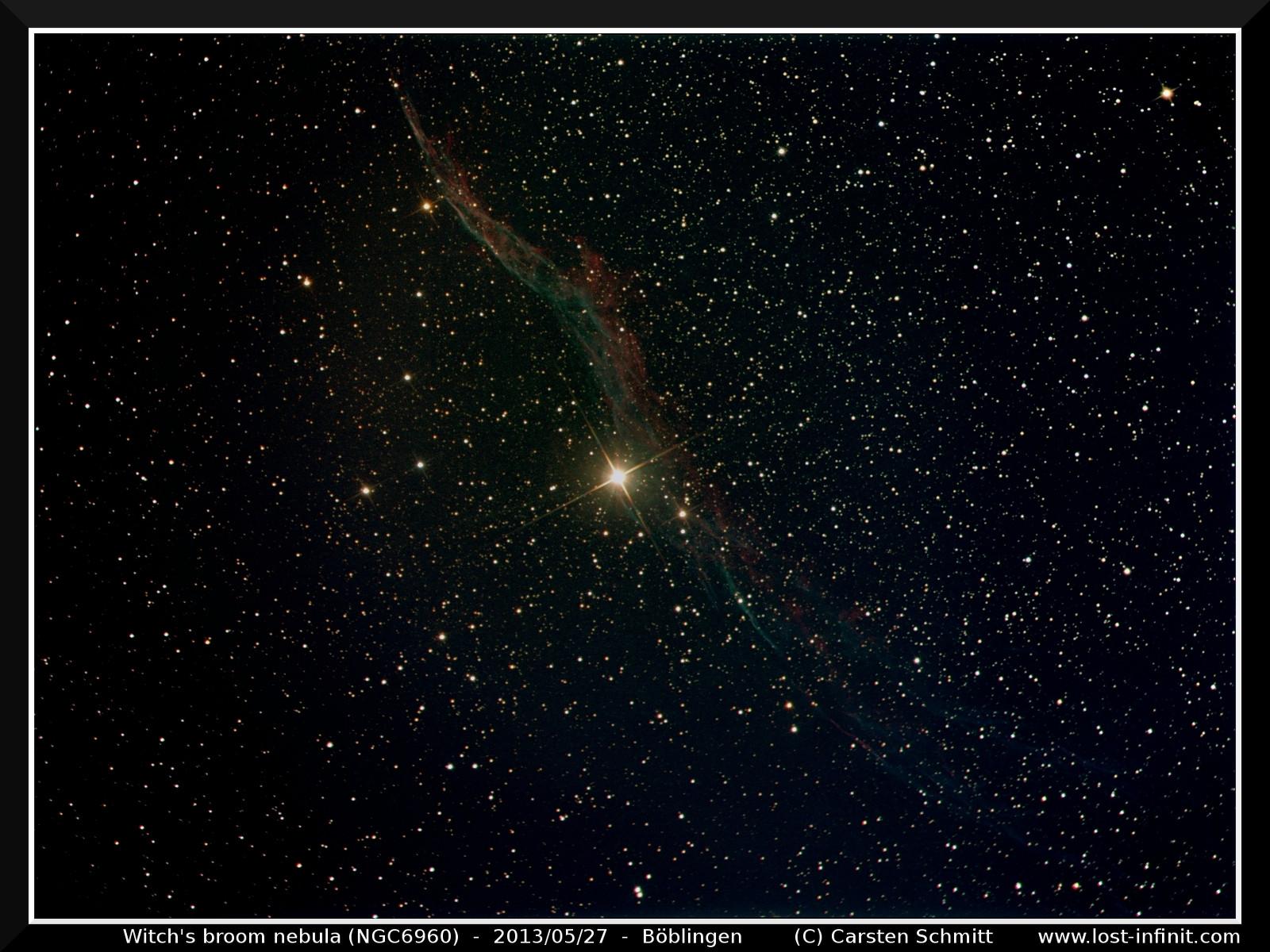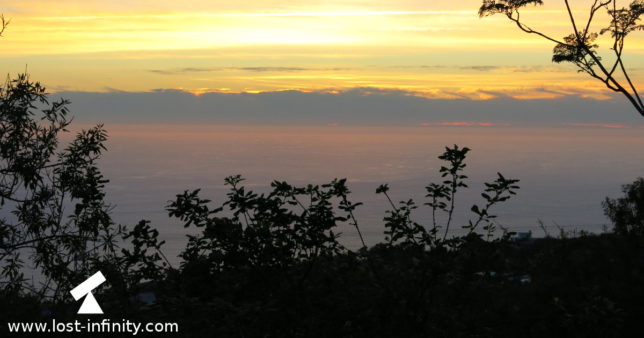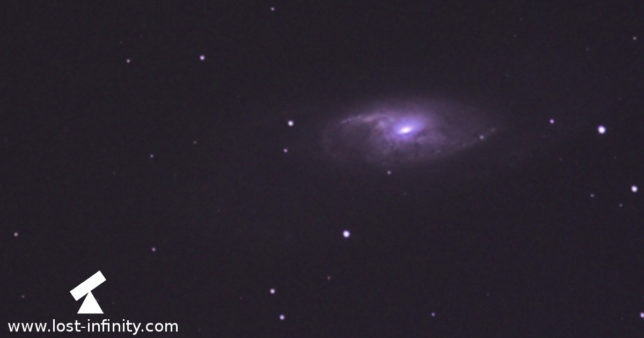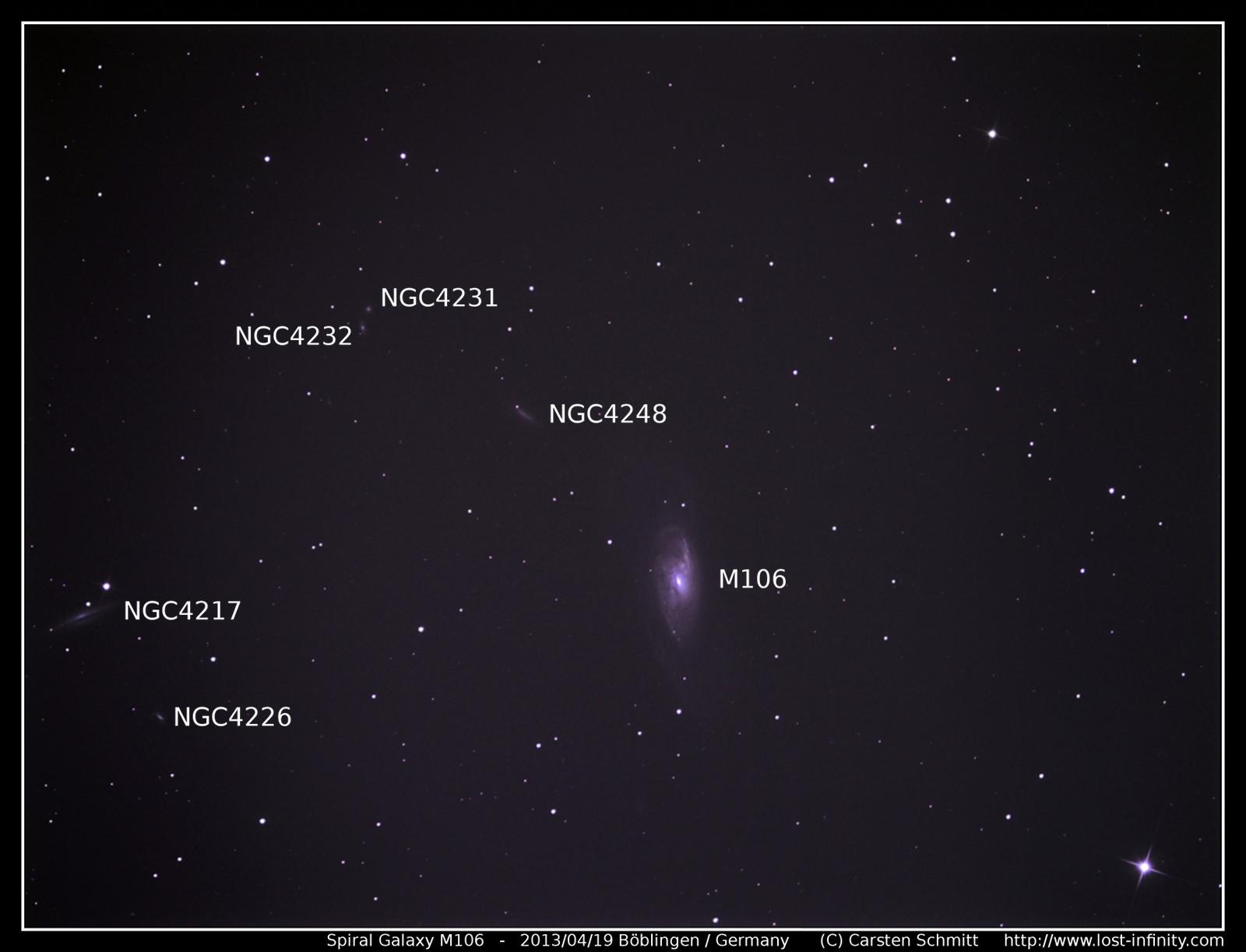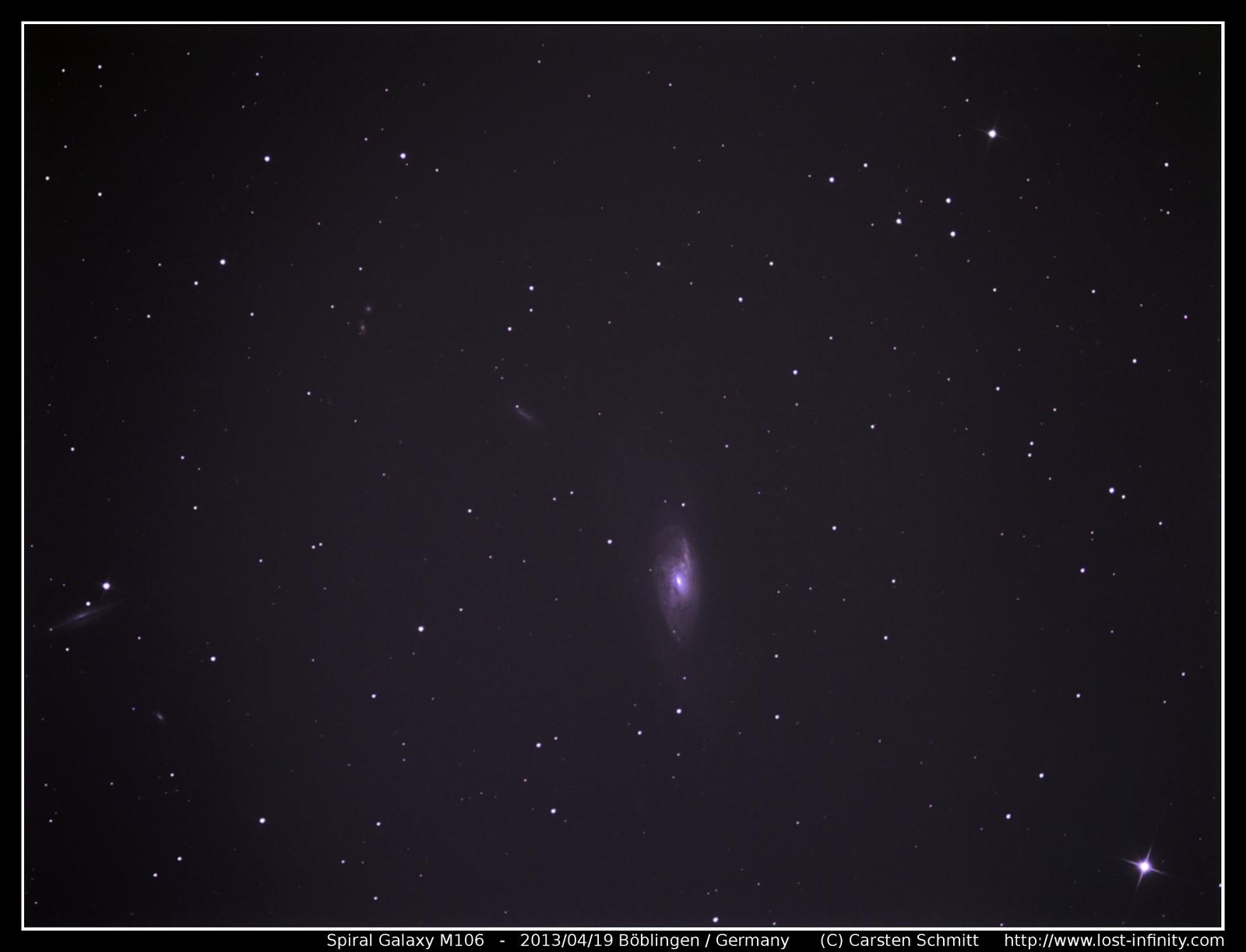My target tonight again was our neighbour galaxy Andromeda (M31). I like this object because even after a short exposure time and even with light polluted sky amazing structures become visible. In September 2012 I already took a first shot of M31. This time the result was even better (even without using any flat-field images) and I decided to put it into “My top Astro-Pics” section. It is also available in full resolution. For stacking I used DeepSkyStacker 3.3.2 with Kappa-Sigma Clipping.
 | Date | 2013/09/03 |
 | Location | Böblingen / Germany |
 | Object | Andromeda Galaxy (M31) |
 | Camera | Atik383L+ |
 | Guiding | yes, DMK31AU03.AS via OAG |
 | Telescope | 8" GSO Newtonian |
 | Barlow lens | none |
 | Mount | EQ6Syntrek |
 | Cooling | -15°C |
 | Luminance | 2x 800s, 1x 600s, 3x 400s, 1x 100s, 1x 20s, bin: 1x1 |
 | Red | 2x 400s, 1x 200s, 2x 100s, 1x 25s, bin: 2x2 |
 | Green | 2x 400s, 1x 200s, 2x 100s, 1x 25s, bin: 2x2 |
 | Blue | 2x 400s, 1x 200s, 2x 100s, 1x 25s, bin: 2x2 |
 | Dark | 2x |
 | Flat | none |
 | Total exposure | ~1h19min. |
Clear skies!
Last updated: June 20, 2022 at 10:34 am




























